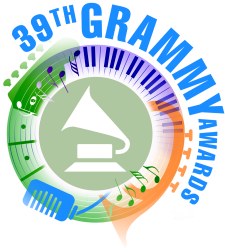Las Vegas, NV. Every year at COMDEX, BYTE Magazine distributes its “Best of Show” awards. These recognize new products and technologies that are innovative and will have a large impact on the industry. The awards are co-sponsored by SOFTBANK, the COMDEX hosting organization.
For this year’s round, with COMDEX wrapping up in Las Vegas today, the prestigious Best Technology award went to an audio processing technology. The Lexicus Division of Motorola, won the award for the Mandarin Chinese version of its speech recognition algorithms.
Lexicus edged out a couple of very high-profile runners-up: Microsoft’s Windows CE operating system (for handheld computers), and Digital Versatile Disc (Toshiba, Sony, Philips, Pioneer et.al.), the fast-rising star of mass multimedia storage for consumer applications.
The Lexicus software runs on several DSP platforms, including Motorola’s own 56000 DSP series and Motorola MemOS, ARM microprocessors, Windows ’95, and Microware. It delivers continuous voice dictation for people speaking Mandarin. Motorola positions the technology for applications such as car phones home portable phones and answering machines, low cost toys and video games.
 Harrison has shipped a 52-wide TV950 to the Belgian Radio and Television Network (BRTN). It will be installed in a new BRTN mobile unit for use in live broadcast feeds. The console is configured with 30 mono mic/line inputs, 6 stereo inputs and 6 group modules. Along with standard assignable fader start logic and two program masters, this TV950 is equipped with a 24 multitrack busing on all inputs, groups and master modules, for multitrack output level control.
Harrison has shipped a 52-wide TV950 to the Belgian Radio and Television Network (BRTN). It will be installed in a new BRTN mobile unit for use in live broadcast feeds. The console is configured with 30 mono mic/line inputs, 6 stereo inputs and 6 group modules. Along with standard assignable fader start logic and two program masters, this TV950 is equipped with a 24 multitrack busing on all inputs, groups and master modules, for multitrack output level control. New York, NY. In a press conference Monday, Michael Greene, President of the National Academy of Recording Arts and Sciences (NARAS) announced that the music and audio industry’s premiere annual awards ceremony has outgrown its traditional venues.
New York, NY. In a press conference Monday, Michael Greene, President of the National Academy of Recording Arts and Sciences (NARAS) announced that the music and audio industry’s premiere annual awards ceremony has outgrown its traditional venues. Warsaw, Poland. The Polish radio industry’s major annual gathering opens its doors tomorrow in Warsaw. The event is organized by the European radio industry magazine Media & Music (based in The Netherlands).
Warsaw, Poland. The Polish radio industry’s major annual gathering opens its doors tomorrow in Warsaw. The event is organized by the European radio industry magazine Media & Music (based in The Netherlands). The show will wrap up on Wednesday evening with more awards. Sony Broadcast & Professional presents the Sound of the Station Award, an interesting competition in which all Polish radio stations are invited to create a 90-second spot containing the essence of the station. Spots from eight finalists will be played during lunch on Wednesday, and all in attendance are entitled to vote. Last year, Radio Plus of Gdansk won the aware.
The show will wrap up on Wednesday evening with more awards. Sony Broadcast & Professional presents the Sound of the Station Award, an interesting competition in which all Polish radio stations are invited to create a 90-second spot containing the essence of the station. Spots from eight finalists will be played during lunch on Wednesday, and all in attendance are entitled to vote. Last year, Radio Plus of Gdansk won the aware.